40 saturated fat on food labels
A Real Person's Guide To Reading Nutrition Labels Fats. Most nutrition labels list total fat, saturated fat, and trans fat. Ideally, you want to make sure that you eat foods that are low, or completely free, of trans fats and saturated fats. Trans fat is added to processed, packaged foods like cookies and crackers. It is an artificial fat that makes snack foods taste good, but it also extends ... Reading Food Labels (for Parents) - Nemours KidsHealth Saturated fats should account for less than 10% of the calories that kids eat each day. Trans fat should be as low as possible (less than 1% of total calories). Unsaturated Fat Unsaturated fats may also be listed under total fat. Unsaturated fats are often called "good fats" because they don't raise cholesterol levels as saturated fats do.
Fat | Eat For Health Use food labels to compare foods and choose those with fewer trans fats. It is great for health to replace saturated and trans fats with mono and polyunsaturated fats. Source: Dietitians Australia (formerly Dietitians Association of Australia). Cholesterol. Cholesterol is a type of fat found in food, but also in our blood. Cholesterol has many ...
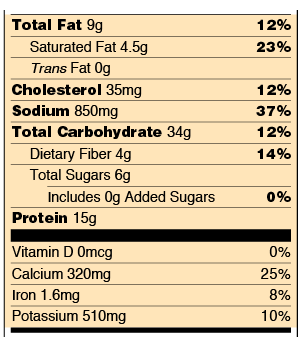
Saturated fat on food labels
Saturated fat - Healthier. Happier. Saturated fat is a type of fat that is solid at room temperature and mostly found in animal-based foods but also in some plant-based foods. Examples include fatty cuts of meat, full-fat milk, butter, cream, coconut and palm oil, most commercially baked products and deep-fried foods. Interpreting Total Fat and Types of Fat on Food Labels - Nina Cherie ... Trans fats and, in some cases saturated fats, are considered "unhealthy" or "bad" while monounsaturated and polyunsaturated (omega-3) fats are generally healthier alternatives or "good" fats. Saturated fats are naturally found in animal-based foods including meats, dairy products and eggs. Food Labels | CDC - Centers for Disease Control and Prevention Sep 20, 2022 · If you eat the whole thing, you are eating 8 times the amount of calories, carbs, fat, etc., shown on the label. Total Carbohydrate shows you types of carbs in the food, including sugar and fiber. Choose foods with more fiber, vitamins, and minerals. Choose foods with lower calories, saturated fat, sodium, and added sugars. Avoid trans fat.
Saturated fat on food labels. Food Labels: Fat & Cholesterol | Home & Garden Information Center Select margarines with 0 grams of trans fat and no more than 2 grams of saturated fat per tablespoon. Avoid hydrogenated fats with more than 2 grams of saturated fat per tablespoon. When comparing food labels, combine the grams (g) of saturated fat and trans fat, then choose the food with the lower combined amount. Fats explained - types of fat | BHF - British Heart Foundation The nutrition labels on your food’s packaging will show you the amount of total fat and saturated fat you are eating. Looking at the amount of saturated fat in your food will help you keep to the recommended daily intake. We tend to eat more saturated fats than trans fats. But you may want to check your food’s nutrition labels for trans ... How to read food labels: MedlinePlus Medical Encyclopedia If a food has less than 0.5 grams of saturated fat in the serving size on the label, the food maker can say it contains no saturated fat. Remember this if you eat more than 1 serving. You should also pay attention to trans fats on any food label. These fats raise "bad" cholesterol and lower your "good" cholesterol. How to Read Food Labels for Fats and Oils Interactive Label Click/tap for details about label claims. Fats & Oils Food Label Claims All-Natural/Natural Canola vs. vegetable oil Cold-pressed Country of Origin Labeling (COOL) Expeller-pressed Extra Virgin Coconut Oil Good source of Omega-3s Healthy Hydrogenation Lite Low fat Low in saturated fat Olive Oil Label Claims Pure Refined Saturation
how to understand food labels - Eat For Health Total Fat Generally choose foods with less than 10g per 100g. For milk, yogurt and icecream, choose less than 2g per 100g. For cheese, choose less than 15g per 100g. Saturated Fat Aim for the lowest, per 100g. Less than 3g per 100g is best. Sodium (Salt) Choose lower sodium options among similar foods. Food with less than 400mg per Food labels - NHS Nutrition labels are often displayed as a panel or grid on the back or side of packaging. This type of label includes information on energy (kJ/kcal), fat, saturates (saturated fat), carbohydrate, sugars, protein and salt. It may also provide additional information on certain nutrients, such as fibre. Nutrition Facts table formats - Food labels - Canadian Food … Although the Food and Drug Regulations (FDR) require the declaration of a Nutrition Facts table (NFt) on most prepackaged products, the information may be presented in a variety of different formats. Industry has considerable flexibility in presentation, and may choose from several different format "families". Within each format family, further choices of presentation style are … How to Read Nutrition Facts Labels the Right Way - GoodRx However, foods that contain less than 0.5 g per serving are allowed to list the trans fats as 0 g on a nutrition label, so consumption of these fats is still possible. Foods that may contain small amounts of trans fats include: Packaged baked goods. Ready-to-eat frozen meals. Refrigerated doughs. Fried foods. Margarine. Shortening
Nutrition labels for drinks high in sugar, saturated fat to be rolled ... Aug 16, 2022 · These concerns came after Health Minister Ong Ye Kung said last week that food and beverage outlets will be required by the end of 2023 to include nutrition labels on their menus indicating drinks ... How Do You Know Your Food's Nutrition Facts Label Is Accurate? The short answer. Manufacturers often confirm their nutrition numbers by matching their products as closely as possible to NIST's food reference materials, which contain precisely measured quantities of nutrients. NIST's measurements are accurate to within 2% to 5% for nutrient elements (such as sodium, calcium and potassium ... Learn How the Nutrition Facts Label Can Help You Improve Your Health That means if you consume 2,000 calories in a day, added sugars should account for no more than 200 calories. Read the Nutrition Facts labels on your packaged food and drinks to keep track of sugars, fats, protein, and other nutrients. Most sodium we consume is from salt, and salt is commonly in processed foods. 11 Foods That Are High In Saturated Fat - Parade: Entertainment ... Red meat. Red meat can also be high in saturated fat, so be sure to read labels and look at the fat content. Or look for leaner cuts. According to the USDA, a lean cut of beef is a 3.5-ounce ...
Reading Food Labels | ADA - American Diabetes Association Put food labels to work. The Nutrition Facts labels on foods are really the key to making the best choices. We'll cover the basics so that these labels make shopping easier for you. You've heard it all. From carb-free to low-carb, to whole and empty carbs, it's hard to know what it all means. Blood sugar highs and lows aren't always ...
Understanding Food Nutrition Labels | American Heart Association If you want to consume less of a nutrient (such as saturated fat or sodium), choose foods with a lower % DV (5 percent or less). If you want to consume more of a nutrient (such as fiber), choose foods with a higher % DV (20 percent or more). Here are more tips for getting as much health information as possible from the Nutrition Facts label:
How To Read Food and Beverage Labels - National Institute on Aging Most older adults exceed the recommended limits for saturated fats, sodium, and added sugars. Compare and choose foods to get less than 100% DV of these each day, making sure to adjust for how many calories are in your diet. Additionally, many older adults do not get the recommended amounts of dietary fiber, vitamin D, calcium, and potassium.
Daily Value on the New Nutrition and Supplement Facts Labels Which Nutrients Are Required to Be Listed on the Nutrition and Supplement Facts Labels? The Nutrition Facts label must list total fat, saturated fat, trans fat, cholesterol, sodium, total...
What's 'healthy'? FDA limits on saturated fat and sugar a let-down for ... For a dairy product to imply health-related benefits on its label, it must contain at least ¾ cup equivalent dairy, have up to 5% DV sugar, 10% DV sodium, and 10% DV saturated fat. Examples of ¾ cup equivalent dairy is 6oz fat-free yogurt or 1 1/8oz non-fat cheese, whilst the daily-value limits translate to 2.5g of sugar, 230mg of sodium, and ...
Saturated fat - Wikipedia Fat profiles. While nutrition labels regularly combine them, the saturated fatty acids appear in different proportions among food groups. Lauric and myristic acids are most commonly found in "tropical" oils (e.g., palm kernel, coconut) and dairy products.The saturated fat in meat, eggs, cacao, and nuts is primarily the triglycerides of palmitic and stearic acids.
How to Understand and Use the Nutrition Facts Label | FDA Saturated fat, sodium, and added sugars are nutrients listed on the label that may be associated with adverse health effects - and Americans generally consume too much of them, according to the...
PDF Read the Food Label To Choose Foods Lower in Saturated Fat Read the Food Label To Choose Foods Lower in Saturated Fat Food labels tell you what you need to know about choosing healthier options. Here's a food label for a carton of whole milk. Whole 1. Serving Size and Number of Servings The serving size is 8 fluid ounces (1 cup). There are two servings in this carton. 2. Amount Per Serving
Easy Guide to Understanding Food Labels When You Have High ... - MyDoc Saturated fat is a type of fat that raises your total and LDL cholesterol and risk of heart disease, so intake should be limited. The average adult should consume less than 20 grams of saturated fat per day. Trans fat is more harmful and damaging to the arteries as it raises LDL (bad) cholesterol and lowers HDL (good) cholesterol.
7 Nutrition Label Ingredients to Avoid - Walker Methodist Sodium Nitrites and Sodium Nitrates These food label ingredients are often found in processed meats such as bacon, deli/sandwich meat, and hot dogs. They have been known to cause colon cancer and lead to heart disease and obesity. This is why it is important to have good quality meats! MSG (monosodium glutamate)
Fats | Nutrition.gov Saturated Fat HHS, Food and Drug Administration, Center for Food Safety and Applied Nutrition Read about saturated fat - what it is, where it is found, and how you can use the Nutrition Facts Label for reducing saturated fat in your diet. The Skinny on Fat HHS, National Institutes of Health Fat is an essential nutrient for our bodies.
Understanding Food Labels | The Nutrition Source | Harvard T.H. Chile implemented the Law of Food Labeling and Advertising in 2016, comprised of mandatory front-of-package (FOP) warning labels, restrictions on child-directed marketing, and the banning of sales in schools of all foods and beverages containing added sugars, sodium, or saturated fats that exceeded set nutrient or calorie thresholds. [1]
3 Types of Foods High in Saturated Fat - Verywell Health Jul 27, 2022 · Saturated fat should be limited to no more than 10% of your daily calories. One gram of saturated fat is 9 calories. If you eat an average of 2,000 calories/day, you should limit your saturated fat intake to 22 grams/day (about 200 calories). That is roughly the equivalent of 3 tablespoons of butter or two 8-ounce hamburgers. Of course, less is ...
Do Saturated Fats & Unsaturated Fats Equal Total Fats on Nutrition Labels? So, if a serving of your favorite cookies has 0.49g of transfat, saturated fat or unsaturated fat - just 0.01g away from the 0.5g threshold - the manufacturer can label it as containing 0g of that...
PDF Eat Smart with Food Nutrition Labels - American Heart Association percentage of each nutrient in a single serving in terms of the daily recommended amount. • To consume less of a nutrient (such as saturated fat or sodium), choose foods with a lower % DV (5% or less). • To consume more of a nutrient (such as fiber or potassium), choose foods with a higher % DV (20% or more).
PDF Food Label Tip: How to Choose Foods Low In Saturated Fat, Trans Fat ... These food labels are for one serving of milk: 1 cup (8 ounces). Fat-free milk has the lowest % of saturated fat and cholesterol. It has 0% of the Daily Value of saturated fat and 2% cholesterol. Whole milk has 25% of the Daily Value of saturated fat and 12% cholesterol. Milk does not have trans fat. Fat-free milk is a better choice. Potato Chips
How to understand food labels | Eat For Health The Nutrition Information Panel on a food label offers the simplest and easiest way to choose foods with less saturated fat, salt (sodium), added sugars and kilojoules, and more fibre. It can also be used to decide how large one serve of a food group choice or discretionary food would be and whether it's worth the kilojoules.
Fat Content on Food Labels - Reading Between the Lines When it comes to listing fat on food labels, manufacturers are required to only list total fat and saturated fat. Some also voluntarily list monounsaturated and polyunsaturated fat, but it's unlikely you'll see trans fat listed."
Food Labels | CDC - Centers for Disease Control and Prevention Sep 20, 2022 · If you eat the whole thing, you are eating 8 times the amount of calories, carbs, fat, etc., shown on the label. Total Carbohydrate shows you types of carbs in the food, including sugar and fiber. Choose foods with more fiber, vitamins, and minerals. Choose foods with lower calories, saturated fat, sodium, and added sugars. Avoid trans fat.
Interpreting Total Fat and Types of Fat on Food Labels - Nina Cherie ... Trans fats and, in some cases saturated fats, are considered "unhealthy" or "bad" while monounsaturated and polyunsaturated (omega-3) fats are generally healthier alternatives or "good" fats. Saturated fats are naturally found in animal-based foods including meats, dairy products and eggs.
Saturated fat - Healthier. Happier. Saturated fat is a type of fat that is solid at room temperature and mostly found in animal-based foods but also in some plant-based foods. Examples include fatty cuts of meat, full-fat milk, butter, cream, coconut and palm oil, most commercially baked products and deep-fried foods.
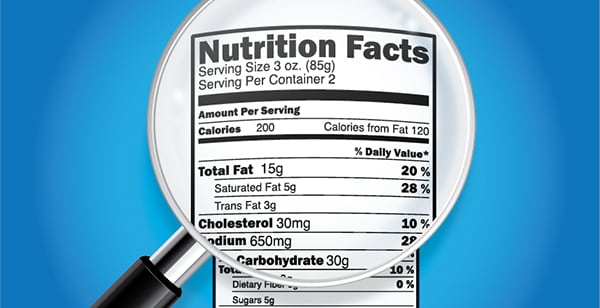




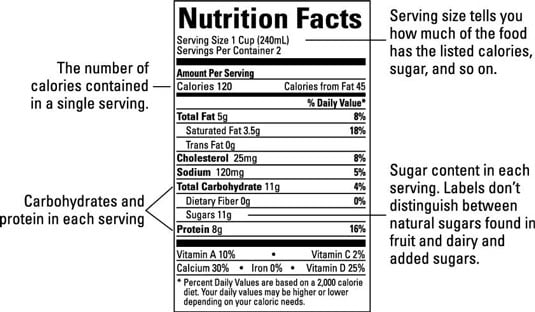
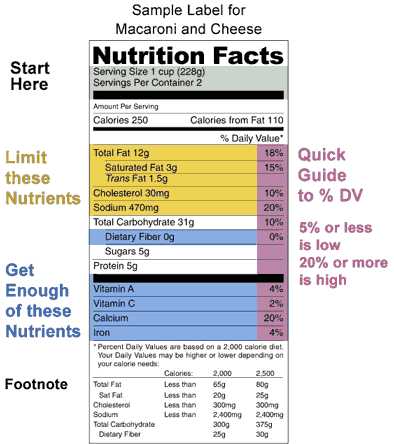
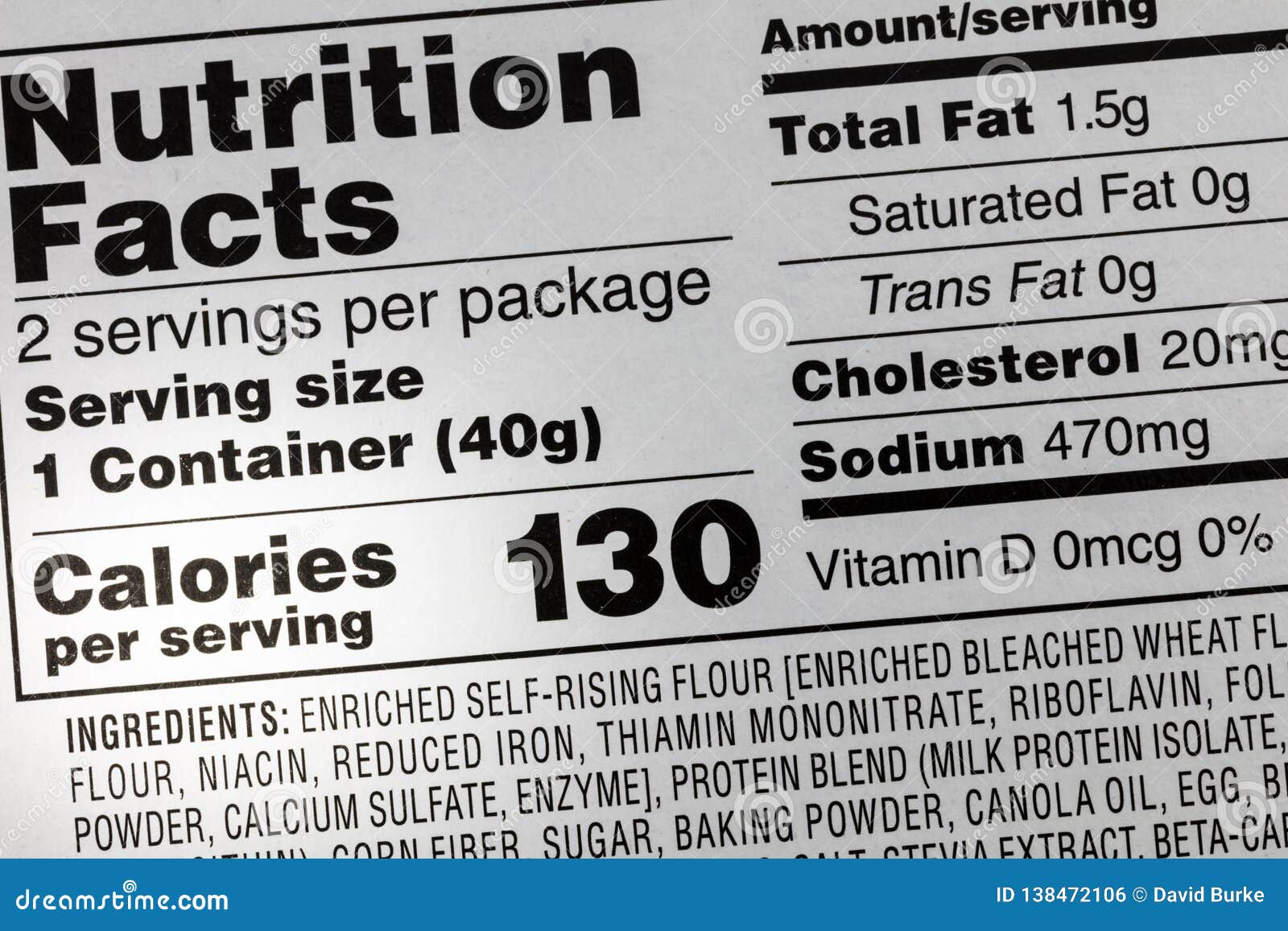






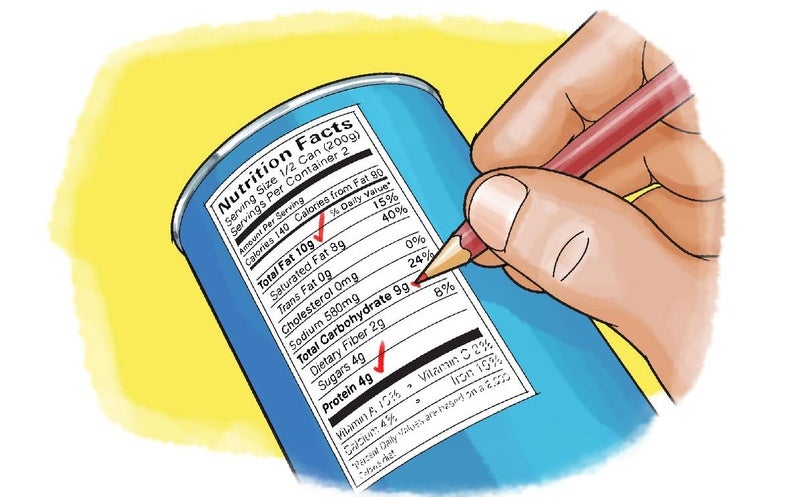





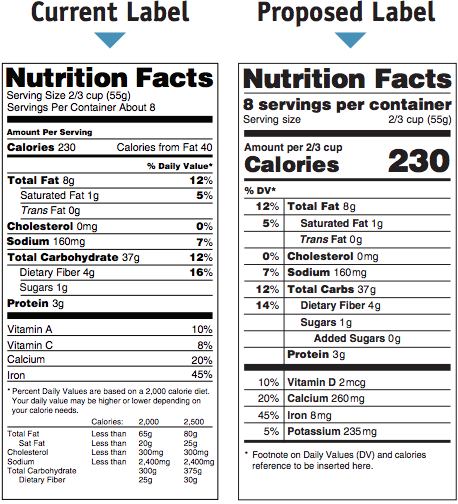


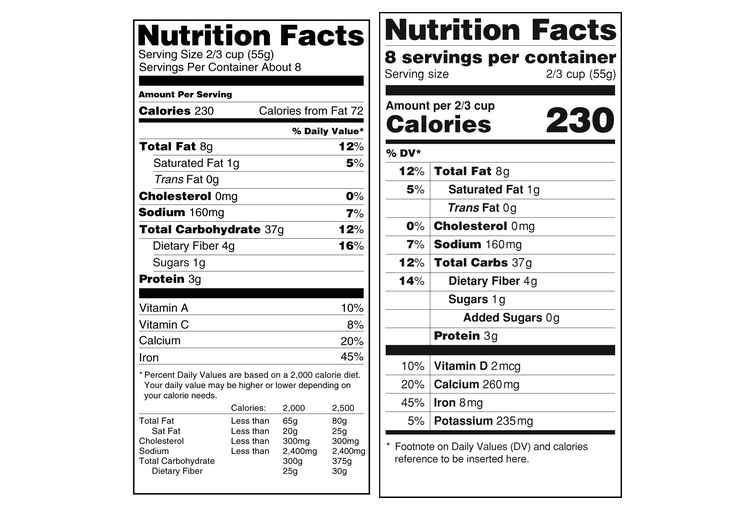
/https://www.thestar.com/content/dam/thestar/life/parent/2022/05/04/your-guide-to-understanding-nutrition-facts-labels/wh_healthykids_may4.jpg)




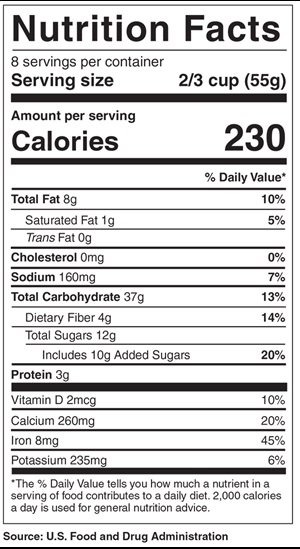
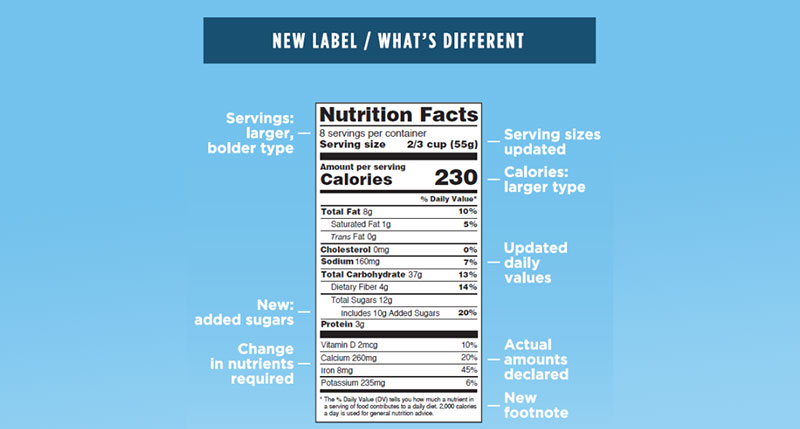

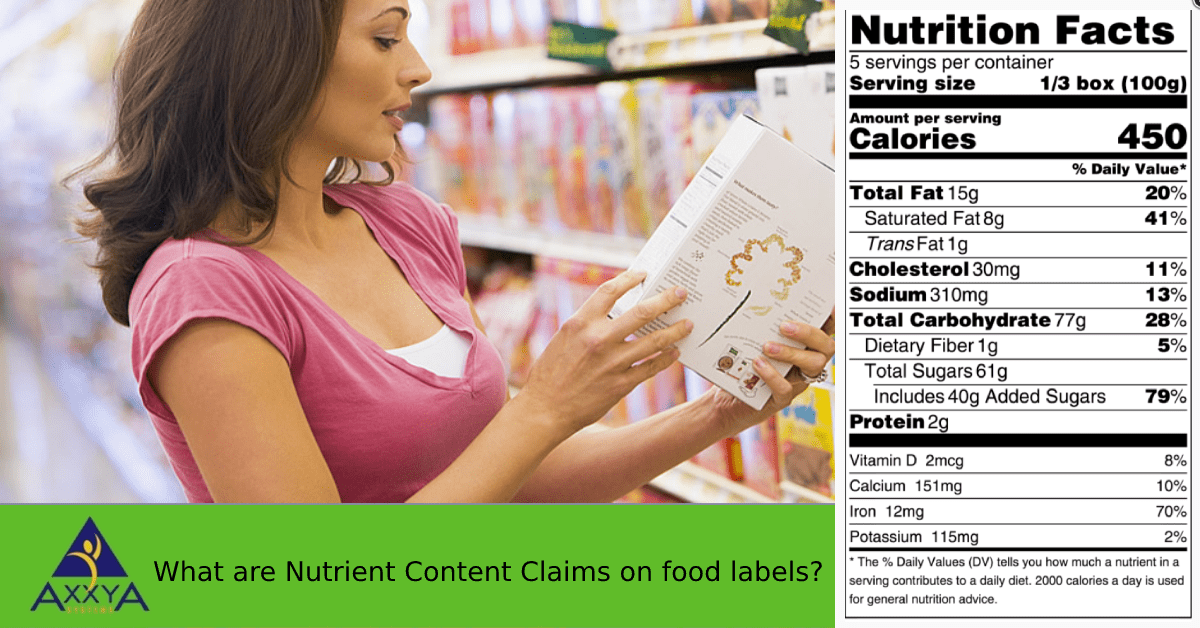
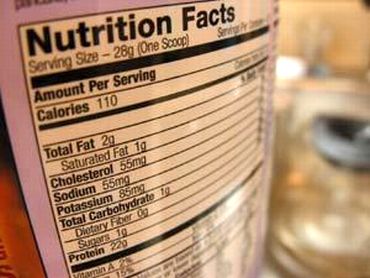
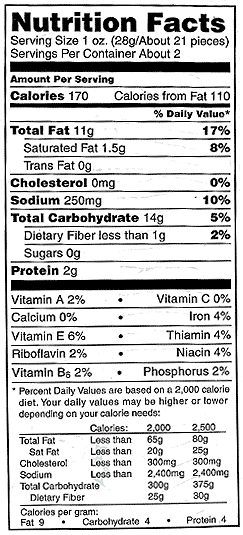

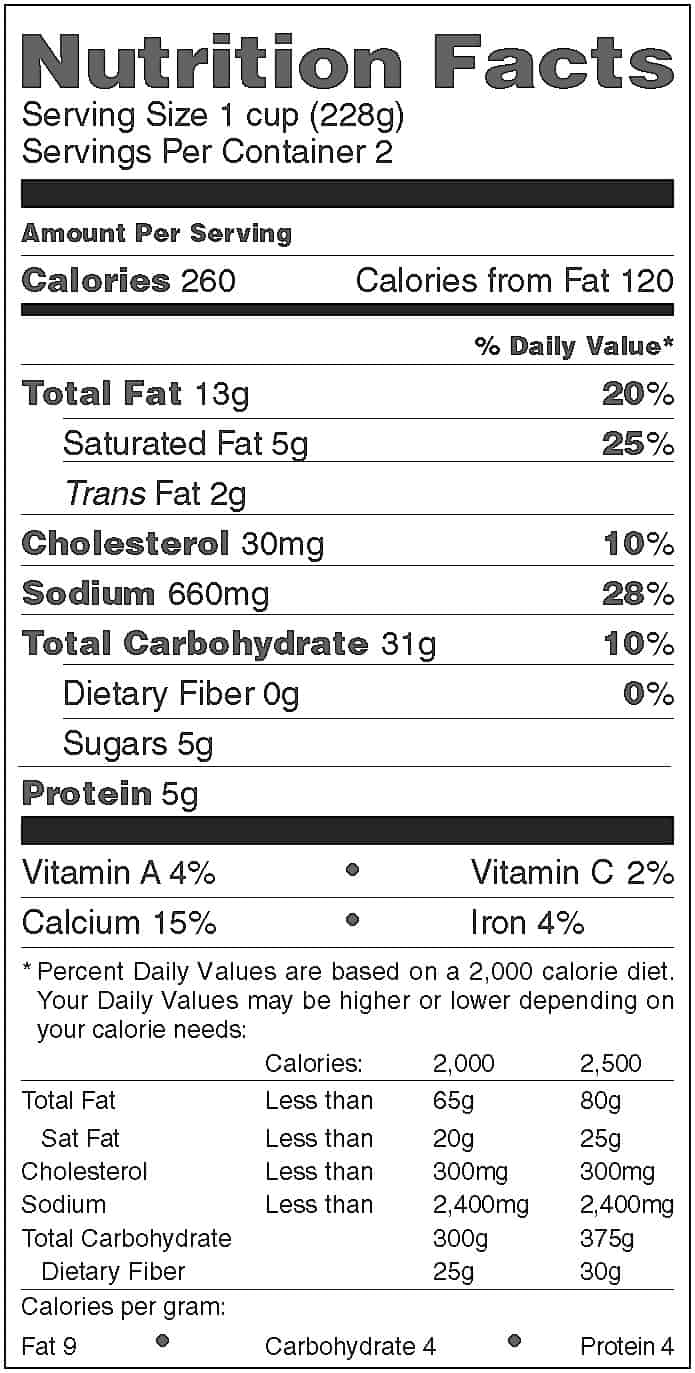

Post a Comment for "40 saturated fat on food labels"